Clay soil and constant wind are not great garden starters. Jan Wood battled them both to wrestle a lush, huge garden out of bare ground in just 10 years, along with turning a World War II American army building into an elegant home.
Story Lindsey Dawson, Photography Gil Hanly
Plenty magazine: Summer 2007
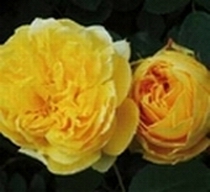 As Jan Wood kept shifting through about 36 houses in the course of her husband John’s long aviation and business career, she kept thinking about the garden she’d create one day.
As Jan Wood kept shifting through about 36 houses in the course of her husband John’s long aviation and business career, she kept thinking about the garden she’d create one day.
“I had this memory of an aunt’s place at Wither Hills, in summer, with wasps hanging round the jam jar and the feeling that those sunny days would last forever. I was always a bit nutty about that.”
Ten years ago she began, setting out to turn 40 hectares of bare grassy hills at Waitoki, 40km north of Auckland, into a leafy paradise called Villa Rosa.
None of it’s been easy to create – neither the house nor the garden. Go down the curving drive through a stand of Oriental plane trees and a grand, two-storied house comes into view. It looks like it’s been in place for decades, but was pulled apart at the first floor and hauled there out on two trucks from the grounds of Middlemore Hospital.
Jan describes as “a helluva time” the tricky business of putting the ground floor on new footings and stacking the upper half back on top. “One false move and it would have just been a mass of concrete in the paddock. The locals thought I was crazy.”
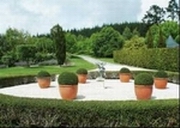 The US army built the place in 1942 and then gave it to the hospital after the war. After serving as a registrar’s house it became a children’s retreat. “One of the electricians who came to work on it said, ‘I know this house!’ He’d stayed in it when he was young. There were still baby nappies and singlets in a cupboard when we bought it.”
The US army built the place in 1942 and then gave it to the hospital after the war. After serving as a registrar’s house it became a children’s retreat. “One of the electricians who came to work on it said, ‘I know this house!’ He’d stayed in it when he was young. There were still baby nappies and singlets in a cupboard when we bought it.”
Now, with further additions and added garaging it’s the elegant centrepiece of Jan’s ever-expanding garden. At first the soil almost broke her heart. “It’s the worst white clay. And the wind! So we started planting windbreaks, first putting in fast-growing trees and then adding slower growers.” She has created just over three hectares of garden so far, using native and deciduous trees, and with hedges forming a series of lovely garden rooms. There’s calm air inside the leafy walls even on the most blustery days.
Jan grows hundreds of roses, camellias “and lots o fragrant things”, along with 90-odd heritage fruit trees. She likes to put them in unexpected corners, so people can pluck a mandarin or feijoa as they pass by. “Trouble is, the possums like them too.”
With no cats allowed, bird life is flourishing. “About 40 swallows come and nest every year. They’re in the gutters and everywhere.” Jan adds wryly: “John is not pleased. But of the course the birds spread seed and that promotes more tree growth. Trees are what it’s about. I can’t plant enough of them.”
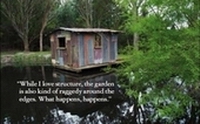 To the east of the house is a row of pleached euggeni Australis (commonly called the monkey apple). “I loved that look when we saw it in Europe. Italian and French design has been inspirational. But while I love structure, the garden is also kind of raggedy around the edges. What happens, happens. I had a plan at the start but there’s been a lot of fun as other people have made suggestions.”
To the east of the house is a row of pleached euggeni Australis (commonly called the monkey apple). “I loved that look when we saw it in Europe. Italian and French design has been inspirational. But while I love structure, the garden is also kind of raggedy around the edges. What happens, happens. I had a plan at the start but there’s been a lot of fun as other people have made suggestions.”
Villa Rosa’s soil looks rich and dark – a far cry from the hard clay she started with. Mulch has done the trick, along with fertiliser, compost and old carpet.
John and Jan’s sons, Nick and Tim, were the founders of internet company ihug. When the business was sold, Jan pounced on old office carpets that otherwise would have been dumped. Off-cuts (“anything I can get my hands on”) spread under the trees have protected the soil from winter wet and summer heat.
The Woods also have a Viaduct Basin apartment and city life suits John well, but Jan always yearns for green. “I get desperate and can’t stay in the city for too long.” Morning and evening are her favourite times in the garden. “I like to get up at 6.30 when the sun’s coming up – it’s incredibly peaceful.”
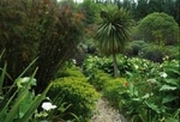 Stella Rosa is her project and she’s in charge, running some of the land as a farm with 50 head of stock. She says with a chuckle, “I keep planting and John keeps smiling – as long as I pay for it.” She plans to sell off about half the 40 hectares to provide income to fund the rest of it. But it’s also a creation aided and nourished by family and friends who add to the enterprise with slips and cuttings from their own gardens.
Stella Rosa is her project and she’s in charge, running some of the land as a farm with 50 head of stock. She says with a chuckle, “I keep planting and John keeps smiling – as long as I pay for it.” She plans to sell off about half the 40 hectares to provide income to fund the rest of it. But it’s also a creation aided and nourished by family and friends who add to the enterprise with slips and cuttings from their own gardens.
Two gardeners, one full-time and one half-time (Daniel Pipkin and Neville Miller), help make Jan’s dream come true. A garden on this scale (1700 oaks were planted in one valley last year) needs both labour and know-how. Arborists come in four or five times a year to trim the hedges to manicured perfection.
“My idea is to eventually open it up for people. I want it to be a public space. Maybe that sounds like a big vision but there’s no botanical garden on the North Shore and I’d love that to happen in future. It would be wonderful. I don’t ever want a developer cutting up this land.”
Villa Rosa is her legacy, really. “I haven’t a clue where it will go. It just evolves,” she says, as we wander through her garden’s leafy halls, past huge vegetables, pungent herbs, day lilies, old-fashioned perennials and swathes of agapanthus. (“I know you’re not supposed to plant those now, but I don’t care.”) So what drives her? “Well, I can’t sing and I can’t paint and I don’t know how good I am at this either. But it gives me such great pleasure.”
Reprinted by permission. Copyright 2007 Plenty magazine Summer 2007 published for Hanover Group.








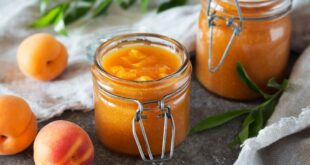
Join the Discussion
Type out your comment here:
You must be logged in to post a comment.